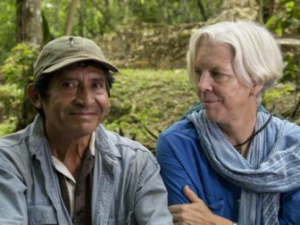In the years since Anabel Ford encountered the Maya city of El Pilar between Belize and Guatemala in 1983, the research anthropologist and director of the MesoAmerican Research Center at UC Santa Barbara has dedicated her career to documenting and preserving the ancient site.
Now, a new grant of $289,806 from the National Science Foundation will allow Ford and her research team of archaeologists, botanists, geographers, palynologists and soil scientists to conduct research into how the Maya built and sustained dense settlements in the tropical forest.
“We are asking what geographic characteristics are influencing ancient Maya settlements,” said Ford, whose team includes co-principal investigator Keith Clarke, professor in the Department of Geography at UCSB. “To ask this question we need to have a settlement survey for archaeology, soil for fertility, vegetation for the environment, topography for the landscape base and the modeling for geography.
“This grant will bring into our comparative data a soil study by soil scientists and vegetation and pollen analysis by botanists from EcoSur Mexico,” she continued. “They work in the Maya Forest and will bring in new and challenging perspectives on the settlement and environmental issues.”
The grant will also let Ford finish mapping El Pilar Archaeological Reserve for Maya Flora and Fauna, which covers 5,000 acres, or 2,000 hectares. Remotely sensed Lidar imagery, along with data from the various disciplines on-site, will be used by Clarke to build models of agricultural land sustainability and human environmental impacts.
“We need soil and vegetation data,” Ford said, “to integrate the settlement survey and compile a new map with all variables to examine site and subsistence and then move on to examine in depth how El Pilar’s people managed the environment.”
The project will also provide opportunities for students, professional colleagues and volunteers from the United States, Belize, Guatemala and Mexico to engage in the research, according to Ford.
“Investigators will expand local networks and partnerships by coordinating activities with community-based organizations, NGOs and governmental agencies to promote greater scientific knowledge of the prehistory and ecology of the Maya lowlands,” she said. “New data generated by this project will be available to all partners to aid in planning projects for education and development.”
Click the link below to read the full article.







